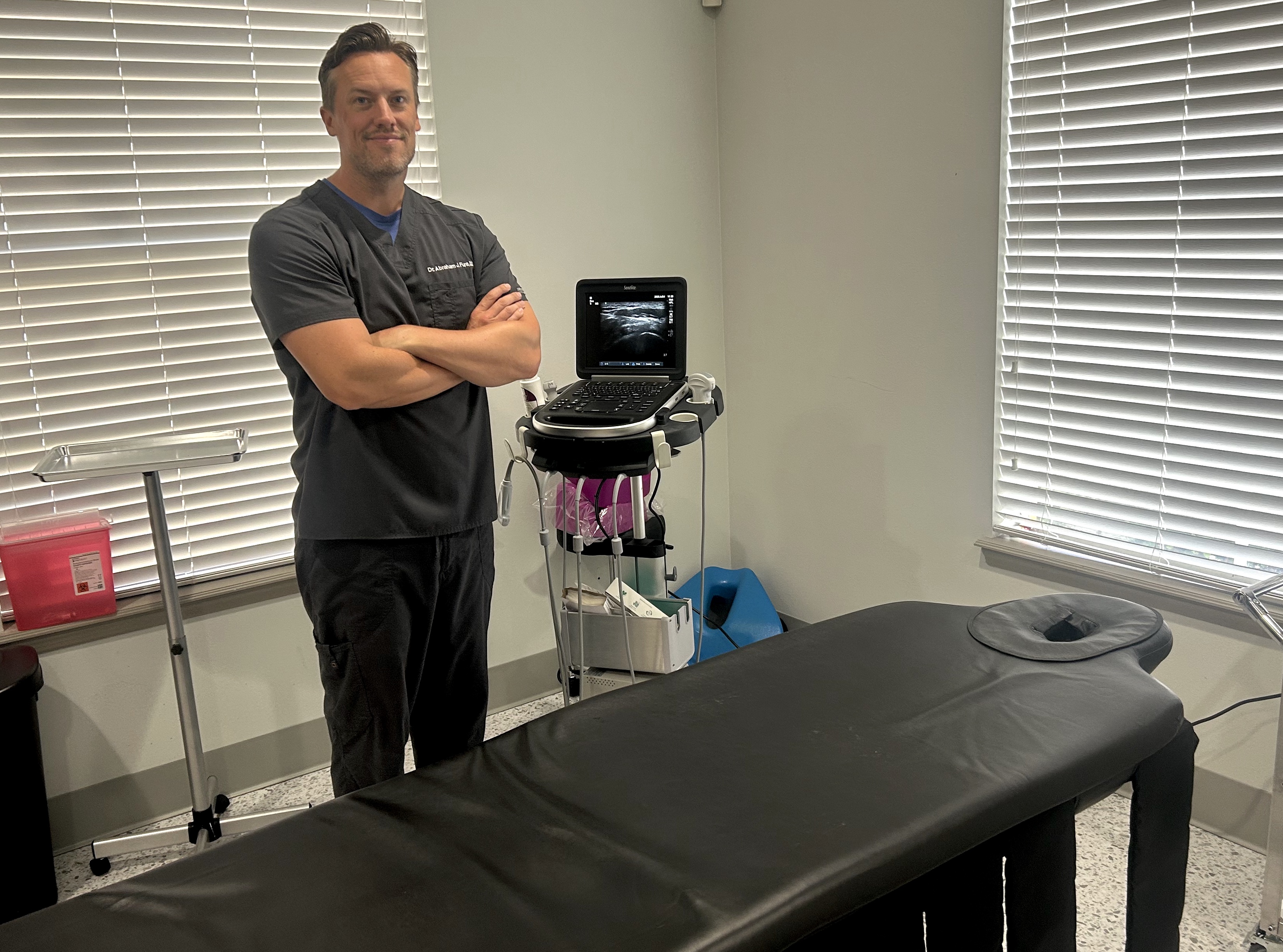
TREATMENT OVERVIEW
The Minuteman® by Spinal Simplicity is a cutting-edge, minimally invasive device used to stabilize and fuse the SI joint or lumbar spine. Its revolutionary lateral approach avoids the major muscle disruption of traditional surgery, leading to less pain, a shorter hospital stay, and a faster recovery. It is a modern solution for conditions like SI joint dysfunction, spondylolisthesis, and degenerative disc disease.


PROCEDURE DETAILS
The Minuteman is a surgical procedure performed in an operating room, typically under sedation or general anesthesia. While you are positioned on your side, your surgeon makes a single, small incision (about one inch) on your flank.
Using fluoroscopy (live X-ray) for guidance, a narrow pathway is created to the spine. Unlike traditional surgery, this lateral approach avoids cutting or damaging the major muscles of the back. This muscle-sparing technique is the key to a less painful, faster recovery.
The Minuteman implant is inserted in a compressed form and then expanded once in the correct position. Its wings open to securely grip the bone, providing immediate stability. Bone graft material is packed into the implant to stimulate the bones to grow together over time, creating a solid, permanent fusion.
TREATMENT ADVANTAGES
The Minuteman procedure revolutionizes spinal stabilization by offering the benefits of a fusion through a much less invasive and muscle-sparing technique.
Performed through a single small incision on your side, this technique avoids the large incisions and trauma of traditional open back surgery.
The lateral approach avoids cutting or disrupting the critical stabilizing muscles of the back, leading to significantly less post-operative pain.
With less tissue disruption, patients typically experience a quicker and more comfortable recovery, allowing an earlier return to daily activities.
The minimally invasive nature of the procedure results in significantly less blood loss and a lower risk of complications compared to traditional fusion.
For many patients, the Minuteman procedure can be performed on an outpatient basis, allowing you to recover in the comfort of your own home.
The expandable implant provides immediate fixation and stability to the painful segment of your spine while the permanent bone fusion develops.
IMPORTANT INFORMATION
While the Minuteman procedure is a significant advancement over traditional surgery, it is still a fusion procedure and carries the risks inherent to any surgery. Your surgeon will discuss these with you in detail.
Important: Adhering to all post-operative instructions, especially activity restrictions, is the most crucial factor in ensuring the bones heal properly for a successful, long-term fusion.
PREPARATION GUIDE
Proper preparation for your surgery is essential for a smooth procedure and recovery. Please review the following important steps.
Ensure you have a thorough review with Dr. Fura. Disclose all allergies, especially to medications like contrast dye.
Stop blood thinners and other specific medications as instructed by Dr. Fura before your procedure.
Do not eat or drink after midnight. You must arrange for a responsible adult to drive you home afterward.
Wear comfortable, loose clothing. Avoid jewelry and leave valuables at home for safekeeping.
RECOVERY GUIDE
Your recovery is faster than traditional fusion but still requires a dedicated period of healing and a careful, gradual return to activity.
After a short period in recovery, you will be helped to stand and walk. Many patients can go home the same day. You will use a walker for support initially.
The focus is on pain management and protecting the healing site. You will have strict restrictions on bending, lifting, and twisting. Short, gentle walks are encouraged.
A follow-up visit with X-rays will check the implant and early healing. Your surgeon will gradually lift your restrictions and may clear you to begin formal physical therapy.
The bone fusion process continues for several months. Follow-up appointments will monitor your progress until you are fully healed and can return to a more active lifestyle.
Please don't hesitate to reach out and request an appointment. We look forward to meeting with you, addressing your concerns, and working together to enhance your quality of life.